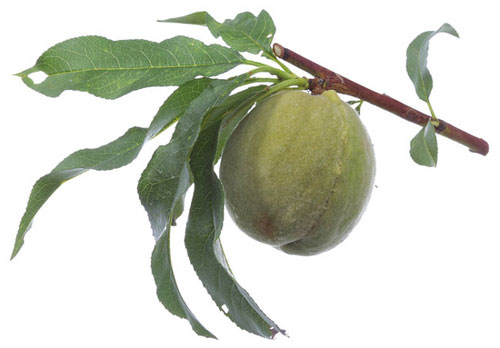That's not trash, that's dinner
Updated: 2011-07-27 14:44
(The New York Times)
|
|||||||||||
 |
|
Peach leaves.[Photo/The New York Times] |
Modern chefs have long embraced a nose-to-tail approach to meat, but recently they have been looking at the plant kingdom with a predatory eye. One of the most adventurous is Andrea Reusing of Lantern in Chapel Hill, N.C.
"It came from a curiosity about flavor, more than a need to use things up," she said, referring to stem-to-root recipes she has tinkered with. "But of course that's a benefit, and something our ancestors were very good at."
She has infused wine with peach leaves, toasted the seeds of watermelons and taken a hammer to cherry pits, cracking them open to unleash the kernels' sweet almondlike perfume into panna cotta. The recipe is included in Ms. Reusing's new book, "Cooking in the Moment."
(But as good as it is, this dessert should be eaten in moderation. Cherry pits, like peach leaves and apple seeds, contain minute amounts of cyanogens, compounds that can produce the poison cyanide. Other plant parts can also contain small amounts of toxins, so be cautious when eating them. The central number for the American Poison Control Centers is 800-222-1222.)
 |
|
Watermelon rind.[Photo/The New York Times] |
Her cooking often combines Southern farmhouse tradition with the flavors of Japan, Korea and China, rich sources of stem-to-root traditions. She buys from farmers who grow Asian varieties of turnips, soybeans and radishes; she has salt-cured whole daikons, pickling the white flesh and salting the greens with chiles. The leaves of the wasabi root, she said, have an oily, mustardy kick: she slices them thinly to use as a garnish for a Japanese-inflected pot-au-feu.
Other chefs are redrawing the sometimes arbitrary lines between vegetables, fruits and weeds. At Jeni's Splendid Ice Cream in Columbus, Ohio, Jeni Britton Bauer "milks" the first corn cobs of the local harvest, adding the sugary liquid to her basic ice cream mixture, and then swirls the buttery results with tart berries.
John Shields, the chef at Townhouse in Chilhowie, Va., festoons plates with chickweed and makes juice from wild grass. Last summer he harvested a crop of green strawberries, curing them in salt and sugar so he could serve them as dessert with soft drifts of whipped cream, cucumbers and marshmallow.
 |
|
Tomato leaves.[Photo/The New York Times] |
"I picked the flowers and shoots from the green bean plants at my farm this morning, and I am going to work with their sweetness," he said. "In my kind of cooking, I wouldn't really know what to do with green beans."
At Your Disposal
Before you throw away your vegetable trimmings, consider some alternative uses:
CARROT, CELERY AND FENNEL LEAVES Mix small amounts, finely chopped, with parsley as a garnish or in salsa verde: all are in the Umbelliferae family of plants. Taste for bitterness when deciding how much to use.
CHARD OR COLLARD RIBS Simmer the thick stalks in white wine and water with a scrap of lemon peel until tender, then drain and dress with olive oil and coarse salt. Or bake them with cream, stock or both, under a blanket of cheese and buttery crumbs, for a gratin.
CITRUS PEEL Organic thin-skinned peels of tangerines or satsumas can be oven-dried at 200 degrees, then stored to season stews or tomato sauces.
 |
|
Cilantro flowers.[Photo/The New York Times] |
MELON RINDS Cut off the hard outer peels and use crunchy rinds in place of cucumber in salads and cold soups.
PEACH LEAVES Steep in red wine, sugar and Cognac to make a summery peach-bomb aperitif. (According to David Lebovitz's recipe, the French serve it on ice.)
POTATO PEELS Deep-fry large pieces of peel in 350-degree oil and sprinkle with salt and paprika. This works best with starchy potatoes like russets.
YOUNG ONION TOPS Wash well, coarsely chop and cook briefly in creamy soups or stews, or mix into hot mashed potatoes.
TOMATO LEAVES AND STEMS Steep for 10 minutes in hot soup or tomato sauces to add a pungent garden-scented depth of tomato flavor. Discard leaves after steeping.
TOMATO SCRAPS Place in a sieve set over a bowl, salt well and collect the pale red juices for use in gazpacho, Bloody Marys or risotto.
TURNIP, CAULIFLOWER OR RADISH LEAVES Braise in the same way as (or along with) collards, chards, mustard greens or kale.
WATERMELON SEEDS Roast and salt like pumpkinseeds.